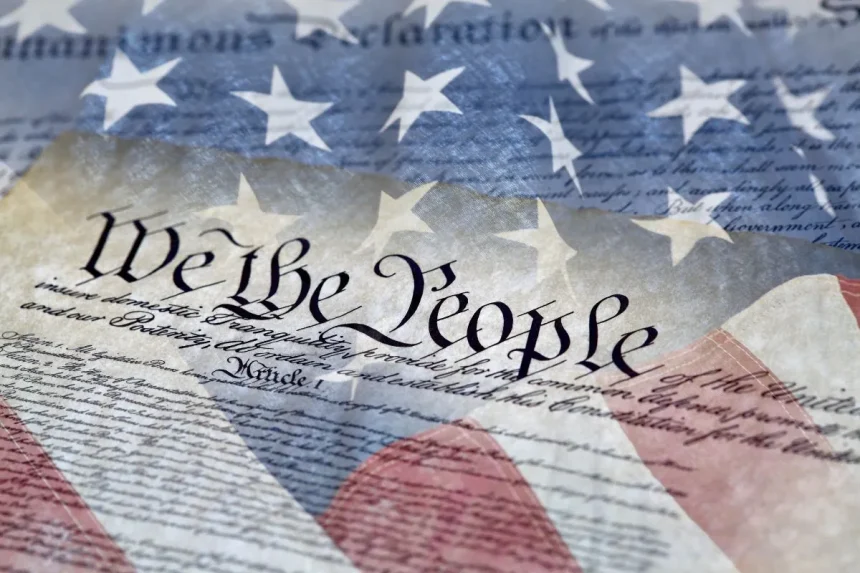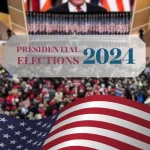Step back in time and explore the vibrant tapestry of United States history. From the nation’s birth to its defining moments, America’s story is one of courage and innovation. Discover the pioneers who forged new frontiers and the leaders who shaped its destiny. Every era, from the Revolutionary War to the Civil Rights Movement, offers stories waiting to be unraveled. Join us as we bring historical moments back to life and uncover untold stories of resilience and achievement. This journey through America’s past will inspire and illuminate, offering insights into the present and hope for the future.
Native American Civilizations and Early Exploration
Long before European settlers arrived, advanced civilizations thrived in America. Indigenous peoples developed rich cultures, languages, and traditions. The vast continent was home to diverse tribes with complex societies. From the Iroquois in the Northeast to the Pueblo in the Southwest, each had distinct ways of life. These civilizations built cities, traded goods, and formed alliances. Their knowledge of the land was unparalleled, and their spiritual beliefs were deeply intertwined with nature.
European explorers like Christopher Columbus set sail in search of new trade routes. In 1492, Columbus reached the Caribbean, marking the beginning of European exploration in the Americas. Other explorers, such as John Cabot and Amerigo Vespucci, followed. These voyages brought new encounters between European and Indigenous cultures. The arrival of Europeans introduced new technologies, diseases, and trade dynamics. This period of exploration set the stage for the eventual colonization of America.
The Colonial Era and the American Revolution
The 1600s marked the start of European settlements in North America. The English established Jamestown in 1607, followed by the Pilgrims landing at Plymouth in 1620. Colonies grew along the Eastern Seaboard, each with unique identities. These settlements were diverse in culture, religion, and governance. The Puritans sought religious freedom in New England, while the Quakers thrived in Pennsylvania.
Tensions between the colonies and Britain began to rise in the 18th century. The British imposed taxes and regulations, leading to discontent among colonists. The Stamp Act and the Tea Act fueled anger and protests. The Boston Massacre and the Boston Tea Party exemplified growing resistance. Colonists sought representation and rights, demanding an end to British rule.
The Revolutionary War began in 1775, igniting a battle for independence. The colonies united against British forces, fighting for freedom. Key battles, such as Bunker Hill and Saratoga, showcased the resilience of American troops. The Continental Army, led by George Washington, faced challenges but persevered. In 1776, the Declaration of Independence was signed, proclaiming liberty and justice.
The Birth of a Nation: The Declaration of Independence and the Constitution
The Declaration of Independence marked a bold statement of sovereignty. It declared the colonies free from British rule, asserting their rights to life, liberty, and the pursuit of happiness. This document, drafted by Thomas Jefferson, inspired hope and courage. It laid the foundation for a new nation built on democratic ideals.
After gaining independence, the young nation faced challenges. The Articles of Confederation, the initial framework of government, proved weak. States held significant power, leading to disputes and inefficiencies. The need for a stronger central government became evident.
In 1787, delegates convened at the Constitutional Convention in Philadelphia. They debated and drafted a new Constitution, establishing a balanced government. The Constitution outlined the separation of powers and checks and balances. It created a federal system with three branches: executive, legislative, and judicial. The Bill of Rights, added in 1791, guaranteed individual liberties and freedoms.
Manifest Destiny and Westward Expansion
The 19th century brought dreams of expansion and exploration. Manifest Destiny, the belief in America’s divine right to expand, fueled westward movement. Pioneers sought new opportunities and adventure in uncharted territories. The Louisiana Purchase of 1803, orchestrated by President Thomas Jefferson, doubled the nation’s size. This vast expanse of land offered endless possibilities for settlers.
The journey westward was challenging and dangerous. Settlers faced harsh conditions, treacherous landscapes, and conflicts with Native Americans. The Oregon Trail and the California Gold Rush attracted thousands seeking fortune and a fresh start. Railroads connected distant territories, facilitating trade and migration.
However, this expansion came at a significant cost. Native American tribes were forcibly removed from their lands. The Indian Removal Act of 1830 led to the Trail of Tears, a brutal forced relocation. Indigenous cultures faced devastation, and their way of life was irrevocably altered.
The Civil War and Reconstruction
The nation became divided over the issue of slavery in the 1860s. The North and South held opposing views on the institution. The South’s economy relied heavily on enslaved labor, while the North moved toward industrialization and abolition. Tensions reached a breaking point, leading to the Civil War in 1861.
The Civil War was a brutal conflict, pitting brother against brother. The Union, led by President Abraham Lincoln, fought to preserve the nation. The Confederacy sought independence, defending their right to maintain slavery. Key battles, such as Gettysburg and Antietam, were turning points in the war. The Emancipation Proclamation, issued by Lincoln in 1863, declared all enslaved people in Confederate states free.
The war ended in 1865 with the Union’s victory. The 13th Amendment abolished slavery, and the 14th and 15th Amendments expanded civil rights. Reconstruction aimed to rebuild the South and integrate formerly enslaved individuals into society. Despite efforts to promote equality, progress was slow and met with resistance. The era of Reconstruction ended in 1877, leaving lasting impacts on race relations.
Industrialization and the Rise of the United States as a Global Power
The late 1800s marked a period of rapid industrial growth. Factories transformed cities, creating jobs and economic opportunities. The rise of industries such as steel, railroads, and oil fueled America’s economy. Entrepreneurs like Andrew Carnegie and John D. Rockefeller amassed great wealth and influence.
Immigrants flocked to America, seeking a better life and opportunities. They contributed to the nation’s workforce, enriching its cultural fabric. Urban centers expanded, with skyscrapers reaching new heights. Technological innovations, such as the telephone and electric light, changed daily life.
The United States emerged as a global economic powerhouse. Its influence extended beyond borders, shaping international trade and diplomacy. The Spanish-American War of 1898 marked America’s entry into global affairs. The acquisition of territories like Puerto Rico and the Philippines expanded its reach.
The Roaring Twenties and the Great Depression
The 1920s were a time of prosperity and cultural change. The Roaring Twenties saw the rise of jazz music, flapper culture, and new social norms. The economy boomed, with advancements in technology and consumer goods. Automobiles, radios, and cinema became integral parts of American life.
However, this period of prosperity was short-lived. The stock market crash of 1929 plunged the nation into the Great Depression. Banks failed, unemployment soared, and businesses closed. The economic crisis affected millions, leading to widespread hardship and poverty.
President Franklin D. Roosevelt’s New Deal aimed to revive the economy. Social programs and reforms provided relief, recovery, and reform. Initiatives like the Civilian Conservation Corps and Social Security offered support. The New Deal expanded the role of government in addressing economic challenges.
World War II and the Post-War Era
World War II reshaped the world order and America’s role in it. The U.S. joined the Allies after the attack on Pearl Harbor in 1941. American forces fought in Europe and the Pacific, contributing to victory. The war effort united the nation, fostering innovation and determination.
The post-war era brought economic growth and prosperity. The GI Bill provided education and opportunities for returning veterans. Suburban life and consumer culture flourished, with families enjoying newfound affluence. The United States emerged as a global superpower, playing a pivotal role in world affairs.
However, the Cold War with the Soviet Union defined global politics. Tensions between the two superpowers led to an arms race and ideological conflict. The threat of nuclear war loomed, shaping international relations for decades.
The Civil Rights Movement and Modern-Day America
The 1960s marked a pivotal period in the fight for equality and justice. The Civil Rights Movement challenged racial segregation and discrimination. Leaders like Martin Luther King Jr. and Rosa Parks inspired change through nonviolent protest. Landmark laws, such as the Civil Rights Act of 1964, advanced civil rights and voting access.
The movement extended beyond race, advocating for women’s rights, LGBTQ+ rights, and more. Social change and activism transformed American society, promoting inclusivity and diversity. The struggle for equality continues, with new challenges and opportunities emerging.
Modern America faces a rapidly changing world. Technology connects people globally, transforming communication and culture. Environmental concerns and climate change demand urgent action. Economic disparities and social issues remain, requiring innovative solutions.
Conclusion: Reflecting on the American Journey
America’s history is a tapestry of struggle and triumph. It is a story of resilience and innovation. Each chapter offers lessons for today and tomorrow. As we look back, we find inspiration for the future. The journey of America continues, shaped by the dreams and determination of its people. Let us cherish the past and embrace the possibilities ahead.
The United States stands as a beacon of hope and opportunity. Its rich history serves as a foundation for growth and progress. As we navigate the challenges of the present, we draw strength from the past. Together, we can build a future that reflects the ideals of liberty, justice, and equality for all.







